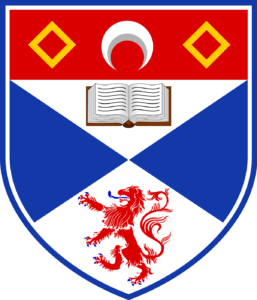The recording of the CLCLCL Project’s Mapping Medieval Legal Manuscripts Webinar is now available online at vimeo.com/475424851
It is password protected, so those interested in watching should email [email protected] for access.
In working on a project concerning legal development in the period 1050-1250, we have dealt with Italian, Anglo-Norman and Southern French legal literature. We have wondered whether the still-current picture, which describes the diffusion of learned legal literature as originating in Northern Italy and quickly spreading northward, remains reliable or instead is still too much influenced by the classic view of the historical school. Following in the steps of Savigny, the historians of medieval legal literature privileged the literary works that followed the very text of the Corpus Iuris Civilis, i.e. glosses, regularly gathered in apparatuses; summae; lecturae; and commentaries. For the historical school, the Justinian’s compilation was the main character in the narrative of western legal history; accordingly, the history of legal literature was mainly conceived of as the history of the different forms of commentary on this compilation. The history of legal literature in Roman law was the history of the progressive efforts to understand the text of Justinian. We can call these types of writings “exegetical literature”.
This image of the medieval legal literature was greatly influenced by the choices made by early-modern publishers, who picked from the vast production of the medieval jurists those works they presumed to be the most likely to be accepted by the new market of buyers of printed books. Making their selection in the late 15th and in the 16th century, the early editors aimed mainly at their business: following the needs and the taste of their age, they had no interest in mirroring the legal literature of the 12th and 13th century, which was made up of many different genres, often gathered in mixed manuscripts. The smaller writings could not be sold successfully in the early modern market. And so their choice fell mainly on exegetical works, i.e. on the works that explained the text following its own order. A large number of other writings, with a significant presence in the manuscripts of the 12th century, were not selected by the printers and remained hidden in the manuscripts. Only a small part of them has been edited critically by legal philologists.
This is the ground on which the legal history written in the last two centuries has built its narrative. And even when the interest of the historians focused strongly on manuscripts, the exegetical writings continued to attract the greatest attention, perpetuating the same perception of the legal literature of the 12th and 13th century as in the printings of the Renaissance.
Our project aims to test this picture by looking at a wider range of legal literature, in particular using electronic mapping as a tool. We will explore whether, if we follow the path of the non-exegetical literature, we get an unexpected picture of the spreading and diffusion of legal literature in Europe. Moreover, by analysing every manuscript that contains a copy of some representative legal writing, we will find what other writings were gathered together by a writer or an owner, and how those other writings reflect a large range of interests, much more diverse than it is currently believed. In particular, manuscripts contain similar non-exegetical writings in Canon Law, Lombard Law, Theology, Grammar, Artes Dictaminis, Chronicles, Logic, Physics.
We have tried an initial experiment by marking on a digital map where the manuscripts carrying 10 representative legal work of the 12th century are preserved today and (if it is known) where they were written or preserved in the past. The works we have selected are:
Bulgarus, De regulis iuris (including also the version written by Bertrandus Metensis)
Bulgarus, Stemma Bulgaricum (the earliest gathering of Quaestiones from the Bologna school)
Geraudus the Provençal, De natura actionum
Geraudus, Summa Codicis (Trecensis)
Ioannes Bassianus, Summa “Quicumque vult” (on actions)
Lo Codi (including French, Occitan, Castilian and Latin versions)
Ordo iudiciorum “Ulpianus de edendo”
Placentinus, Summa “Cum essem Mantue” (on actions)
Perpendiculum
Quaestiones de iuris subtilitatibus
The outcome is striking. The map reveals a revised geography of the spreading of learned law through Europe. The traditional narrative tells of the lucky rediscovery of the Digest in Italy; of the beginning of legal studies at Bologna, and of the journey of the new legal knowledge across the Alps, first in southern France and later all over Europe. Now, the places of origin, of temporary holding, and of actual preservation of our manuscripts appear much more uniformly distributed all over the European space, including today’s England, Northern France, Eastern Spain, Germany, Belgium, Low Countries, Switzerland and Austria. Take the example of Perpendiculum: originating in England, soon received in Northern France and in the Rhineland, arrived in Sicily and on to the Holy Land (Sidon); it was received by Italian scholarship and became the model for new collections of brocards by Pillius and finally Azo. A long journey that had Bologna not as starting point, but as final destination.
We think that our experiment confirms what the late Peter Landau observed in an essay of 2008 (Von Halle nach Harvard, RG 13, p. 157): The researches of Kuttner and Gouron “lead to a completely new image of the legal ‘revival’ of the 12th century, with law schools in Provence, Paris, Reims, Cologne, Lincoln in England and perhaps even in Ireland”. The Map shows that Landau was right, and that the image offered by current handbooks is “surely outdated”.
Furthermore, following the very limited path marked by our 10 legal writings, we walk through a door that lead us into an unexpected intellectual environment, where the borders between disciplines are much more permeable than we used to think. Canon Law and Roman Law seem to be part of the very same library, along with other knowledges which were part of the blossoming scholasticism.
